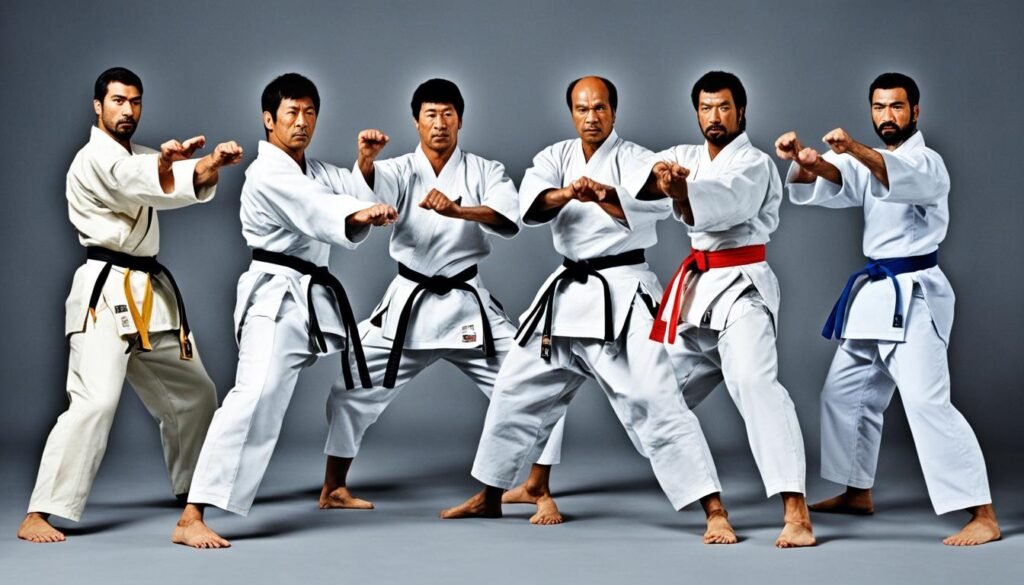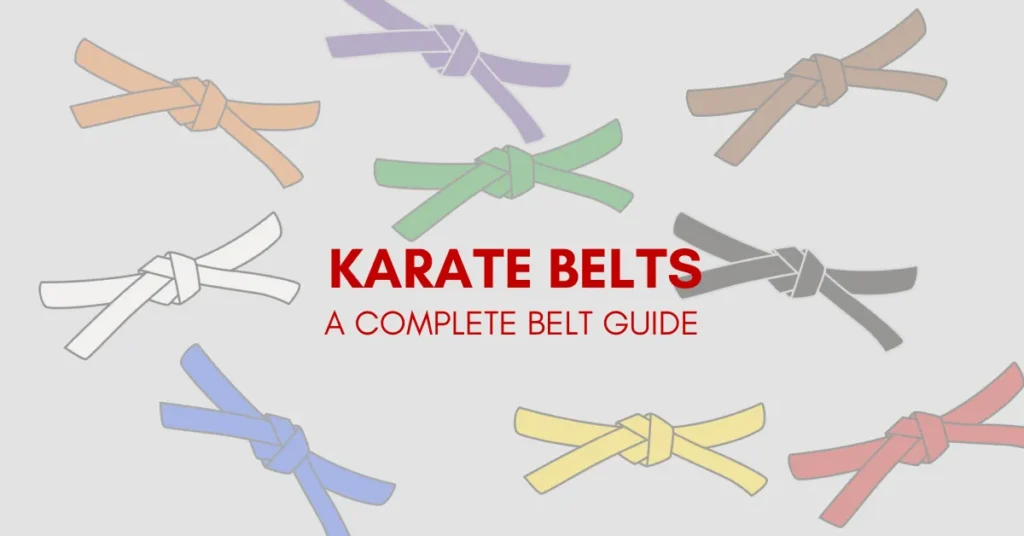The karate belt ranking system is an integral part of many martial arts disciplines, including karate, judo, taekwondo, and Brazilian jiu-jitsu. It is used to signify the level of expertise and progress a student has achieved. The origins of the colored belt system can be traced back to Dr. Jigoro Kano, the founder of modern Judo, who introduced the concept of colored belts to indicate student progress. Gichin Funakoshi, the founder of Shotokan Karate, adopted this system from Judo, and it has since become a standard in many karate styles. The belt colors represent different levels of skill and proficiency, with the white belt usually indicating a beginner level and the black belt representing the highest level of mastery. The belt rankings may vary slightly between different karate styles and schools, but the general progression follows a similar pattern.
Key Takeaways
- The karate belt ranking system is used to indicate a student’s level of expertise and progress.
- The colored belt system originated from Judo and was adopted by karate styles.
- The belt colors represent different levels of skill and proficiency.
- The white belt is usually worn by beginners, while the black belt represents the highest level of mastery.
- The belt rankings may vary slightly between different karate styles and schools, but the general progression is similar.
Meaning of Karate Belt Colors
Each karate belt color holds its own significance and meaning within the ranking system. Understanding the symbolism behind different colored belts is essential for practitioners, as it reflects their progress and level of expertise.
The karate belt progression begins with the white belt, which is typically worn by beginners. The white belt symbolizes purity and a blank slate, representing the starting point of the martial arts journey.
As students advance, they move on to yellow, orange, and green belts. These belts represent growth, development, and an increasing level of proficiency. With each new belt color, students enhance their skills and deepen their understanding of the art.
The blue belt signifies a higher level of expertise and control. It indicates that the student has acquired a solid foundation in karate techniques and is progressing towards mastery.
The brown belt represents a deeper understanding of the art and marks the beginning of mastery. Students with a brown belt have honed their skills and are inching closer to becoming black belts.
The black belt is the ultimate goal and represents the highest level of skill, knowledge, and dedication in karate. A black belt practitioner has shown exceptional proficiency and has undergone extensive training. Achieving the black belt is a significant accomplishment, but it is important to remember that the journey continues even after reaching this milestone.
While the specific meaning of belt colors may vary slightly between different karate styles, the general symbolism remains consistent. The belt colors serve as a visual representation of a practitioner’s progress and commitment, reflecting their growth and dedication to the art of karate.
Karate Belt Ranking System
The karate belt ranking system follows a specific order and progression, allowing students to track their advancement and achievement. Understanding the karate belt order and progression is essential for all practitioners, as it provides a clear path of growth and development within the martial art.
While the exact order of belt colors may vary between different karate styles and schools, the general progression is as follows:
White Belt

Buddy23Lee and Spoxjox, CC BY-SA 3.0 https://creativecommons.org/licenses/by-sa/3.0, via Wikimedia Commons
Yellow Belt

Original rastor graphicSpoxjoxDerived vector artJdcollins13, CC BY-SA 3.0 https://creativecommons.org/licenses/by-sa/3.0, via Wikimedia Commons
Orange Belt

Original rastor graphicSpoxjoxDerived vector artJdcollins13, CC BY-SA 3.0 https://creativecommons.org/licenses/by-sa/3.0, via Wikimedia Commons
Green Belt

Rhaym-tech2004, CC BY-SA 4.0 https://creativecommons.org/licenses/by-sa/4.0, via Wikimedia Commons
Blue Belt

Original rastor graphicSpoxjoxDerived vector artJdcollins13, CC BY-SA 3.0 https://creativecommons.org/licenses/by-sa/3.0, via Wikimedia Commons
Brown Belt

Original rastor graphicSpoxjoxDerived vector artJdcollins13, CC BY-SA 3.0 https://creativecommons.org/licenses/by-sa/3.0, via Wikimedia Commons
Black Belt

Original: Grook Da Oger Vector: Jdcollins13, CC BY-SA 3.0 https://creativecommons.org/licenses/by-sa/3.0, via Wikimedia Commons
Some karate styles may incorporate additional belt colors or use stripe patterns to indicate further progress within a specific belt rank. These variations in the belt ranking system are tailored to each style’s curriculum and training methodology.
It is important to note that the time and requirements for advancing through the belt ranks may vary between individuals and martial arts organizations. Factors such as skill, dedication, training intensity, and the specific curriculum of the karate style are taken into consideration when determining a student’s readiness to progress to the next rank.
Benefits of the Karate Belt Ranking System
The karate belt ranking system serves several purposes within the martial arts community:
- Clear Progression: The belt system provides a visible representation of a student’s progress and serves as a motivator to continue training and improving.
- Goal Setting: Each belt rank serves as a milestone for students to strive towards, enhancing their sense of accomplishment and providing tangible goals.
- Peer Recognition: The belt system allows for easy identification of a student’s level of experience, enabling peers and instructors to provide appropriate guidance and support.
- Structured Curriculum: The belt ranks often correspond to specific techniques and knowledge that students are expected to learn at each level, ensuring a well-rounded training experience.
Throughout their karate journey, students will transition through the various belt ranks, with the ultimate goal of achieving the black belt. The black belt represents not only technical proficiency but also a deep understanding of the art, self-discipline, and dedication to continued improvement.
Karate Master Titles
Karate master titles, such as Shihan, Renshi, Kyoshi, Hanshi, and Soke, carry immense prestige in the karate community. These titles are typically reserved for individuals who have dedicated their lives to the practice and instruction of karate. The mastery and expertise associated with these titles are respected and acknowledged by fellow practitioners.
| Title | Description |
|---|---|
| Dai-Sempai | Given to a 1st kyu brown belt and junior black belt, this title represents a senior student who assists in training newer practitioners. |
| Senpai/Sempai | Used to address an assistant instructor who has gained a certain level of mastery in karate. |
| Sensei | Given to a fully capable teacher, this title represents someone who has reached a high level of expertise and imparts knowledge to others. |
| Shihan | A master title reserved for senior instructors who have demonstrated exceptional skill and experience in karate. |
| Renshi | A master title meaning “polished expert,” bestowed upon individuals who have displayed exceptional proficiency and refinement in their karate techniques. |
| Kyoshi | A master title meaning “teacher of teachers,” awarded to individuals who have mastered the art of karate and made significant contributions to its development. |
| Hanshi | A master title reserved for the head master of a style, representing the highest level of mastery and leadership within a specific karate system. |
| Soke | The absolute head of a style, often the founder or designated successor, commanding authority and respect. |
Requirements for Advancing in Belt Ranks
Advancing through the belt ranks in karate requires a combination of skill, knowledge, and dedication. Each belt rank has specific requirements that need to be met before the student can progress to the next level. These requirements may include:
- Demonstrating proficiency in various karate techniques
- Knowledge of the history and principles of the martial art
- Competency in kata (formal exercises)
- Sparring ability
- Physical fitness
- Mental discipline
The specific criteria for each belt rank may vary between different karate styles and organizations, but the overall goal is to ensure that the student has acquired the necessary skills and understanding to progress further in their martial arts journey.
Conclusion
The karate belt ranking system, rooted in the colored belt ranking system, is a crucial component of martial arts training. It provides structure, measurement, and a tangible sense of progression for students as they develop their skills and advance in rank. Each belt color represents dedication, growth, and achievement, with the black belt symbolizing the ultimate level of mastery.
While the specific belt colors and titles may vary among different karate styles and organizations, the underlying principles and objectives remain consistent. The karate federation recognizes the importance of this ranking system and its significance within the martial arts community.
To earn a black belt, karate practitioners must demonstrate unwavering commitment, disciplined training, and perseverance. It is a journey that demands dedication, hard work, and continuous improvement. The vision of Dr. Jigoro Kano, the colored belt system has become an integral part of many karate styles used today, providing aspirants with a sense of purpose and direction as they progress through their training.
As karate students embark on their martial arts journey, it is essential to understand and respect the ranking system. The karate belt represents not only one’s technical proficiency but also their inner growth and progression within the art. By embracing this system and working earnestly towards their goals, practitioners can earn their black belt and continue their lifelong pursuit of excellence in the dynamic world of martial arts.
FAQ
What is the significance of the karate belt ranking system?
The karate belt ranking system is used to signify the level of expertise and progress a student has achieved in their martial arts training.
Where did the colored belt system originate?
The colored belt system was introduced by Dr. Jigoro Kano, the founder of modern Judo, and later adopted by Gichin Funakoshi, the founder of Shotokan Karate.
What do the different karate belt colors represent?
Each karate belt color has its own meaning and significance, symbolizing growth, development, proficiency, and mastery at different levels.
What is the general progression of karate belt ranks?
Advancing in belt ranks requires a combination of skill, knowledge, dedication, and meeting specific criteria set by the karate style or organization.
What are the belts in karate in order?
The typical order of karate belts includes white, orange, blue, yellow, green, brown, and black. The specific colors may vary among different styles.
What is the best belt you can get in karate?
The highest attainable belt in karate is the black belt, symbolizing a practitioner’s advanced skills and dedication.
How many 10th Dan black belts are there?
Approximately 20 to 30 individuals worldwide hold the rare and prestigious 10th Dan black belt in karate.
What’s the hardest belt to get in karate?
The first-degree black belt is often considered the most challenging, requiring around five years of rigorous training and commitment.



